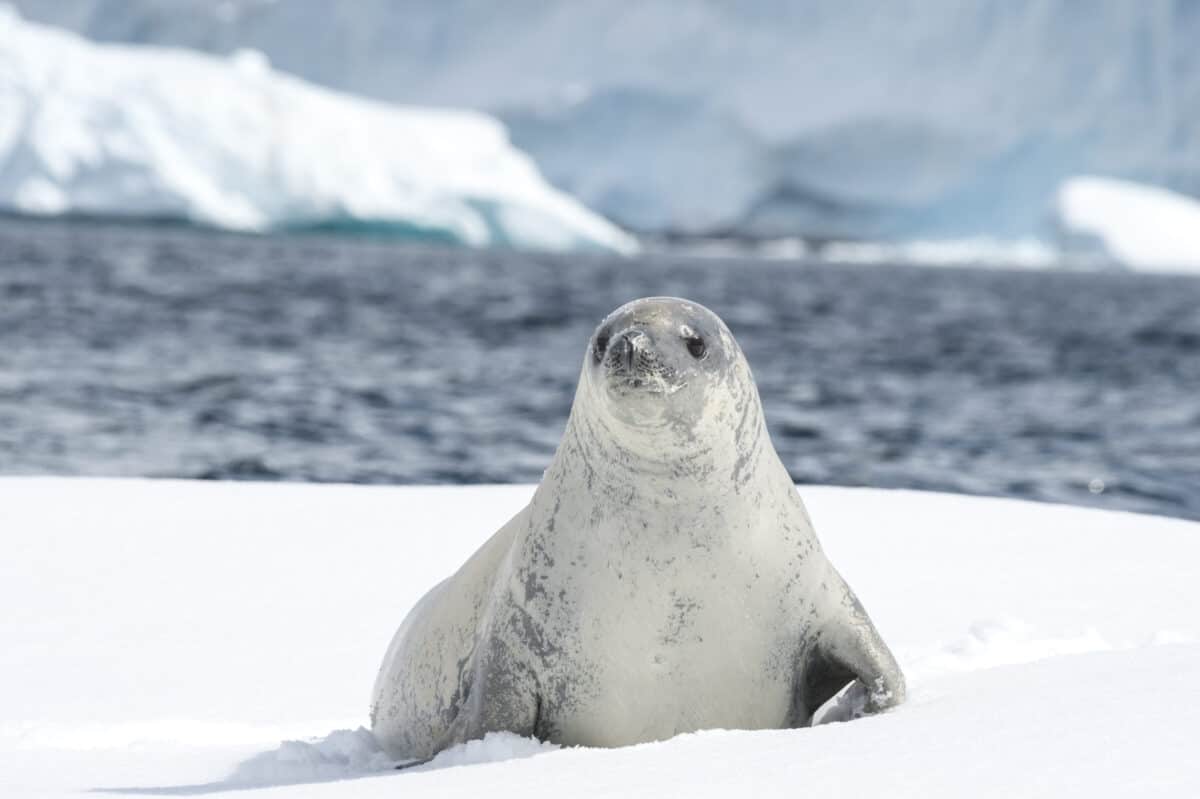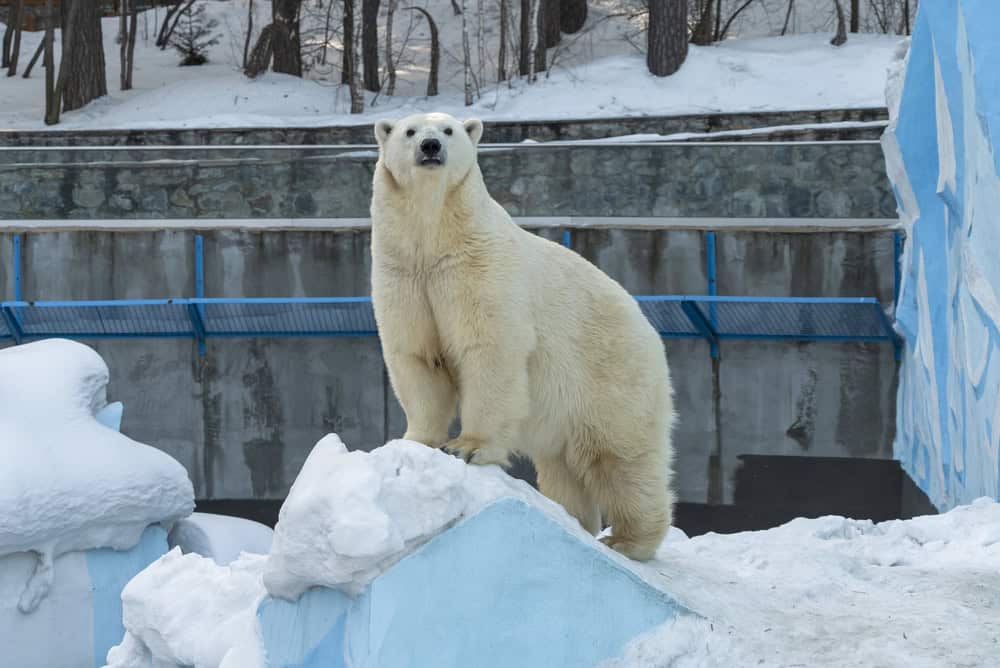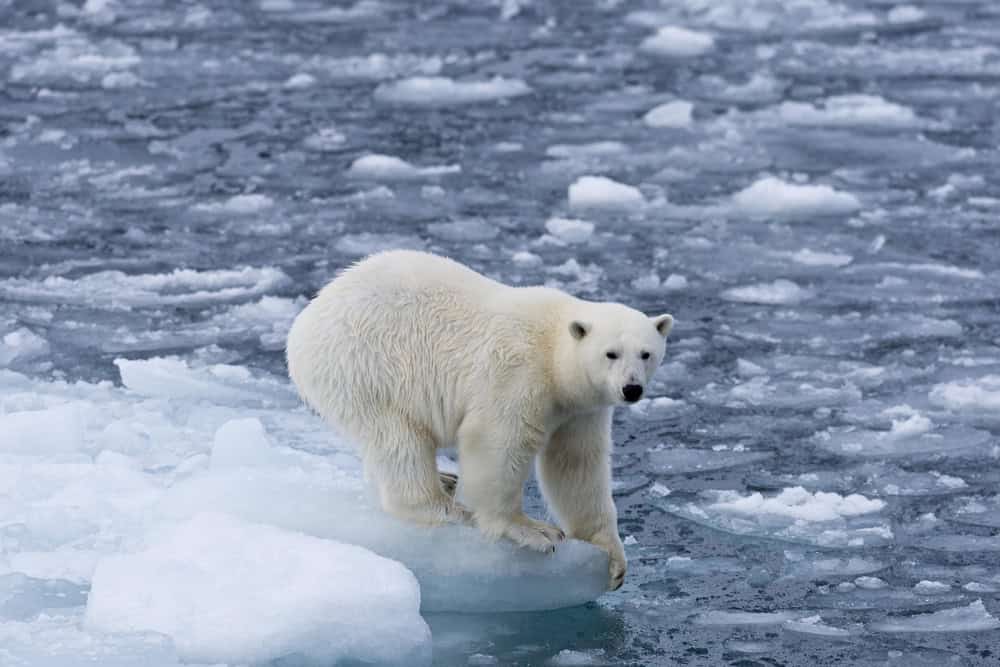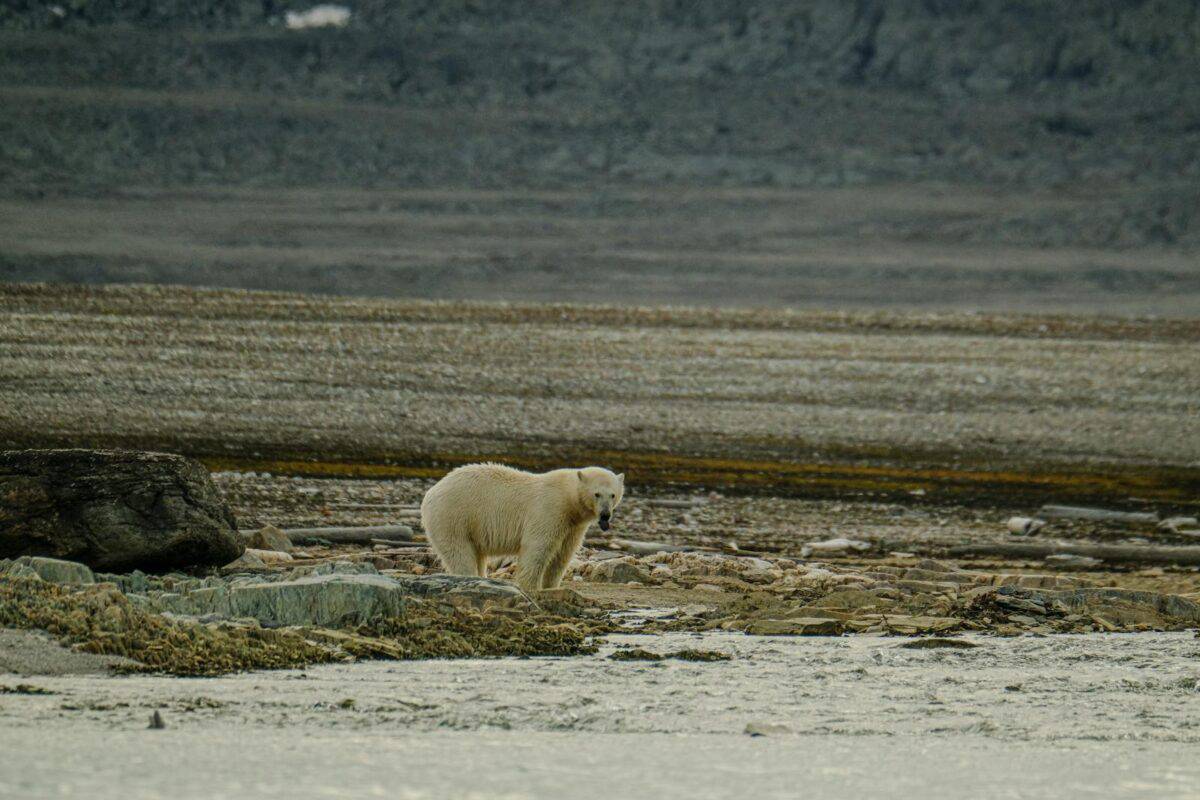In the stark, frozen wilderness of the Arctic, polar bears reign as the top predators, having mastered the art of stealth hunting in one of Earth’s most challenging environments. These magnificent creatures have evolved remarkable strategies that allow them to approach prey virtually undetected, despite their massive size and seemingly conspicuous white fur. Far from being a disadvantage, their physical attributes and hunting behaviors are perfectly adapted for successful predation in the icy landscapes they call home. This article explores the fascinating techniques and adaptations that enable polar bears to hunt without being seen, showcasing nature’s perfect design for Arctic survival.
The Perfect Camouflage: White Fur in a White World

The polar bear’s iconic white fur provides the perfect natural camouflage against the snow and ice of their Arctic habitat. Despite weighing up to 1,500 pounds and standing up to 10 feet tall when on hind legs, these massive predators can virtually disappear against the white backdrop of their environment. The fur isn’t actually white—it’s transparent and hollow, reflecting visible light similar to snow and ice. This remarkable adaptation allows polar bears to blend seamlessly into their surroundings when stalking prey, particularly seals resting on ice floes. The camouflage is so effective that from a distance, only their small black nose might give away their position to vigilant prey or human observers.
Silent Movement: The Art of Stealth Walking

Polar bears have perfected a distinctive hunting technique that minimizes noise when approaching prey. They move with remarkable deliberation, placing each massive paw with careful precision to avoid making sounds that would alert potential meals. When approaching a breathing hole where a seal might surface, the bear will often slide its huge paws forward along the ice rather than lifting them, eliminating the sound of footfalls. They’ve also been observed placing their paws deliberately on softer snow patches to muffle their approach. This methodical movement pattern, combined with naturally padded feet that distribute their enormous weight, allows these half-ton predators to move with the silence of a shadow across creaking ice and crunching snow.
Scent Masking: Approaching Against the Wind

Arctic seals possess an acute sense of smell that helps them detect predators, but polar bears have developed countermeasures to this defense. They instinctively approach prey from downwind, ensuring their scent is carried away from potential meals rather than toward them. Researchers have observed polar bears making significant detours around seal resting sites to position themselves favorably relative to wind direction before beginning their final approach. Some scientists have documented cases where polar bears will even partially submerge themselves in water before approaching prey on ice, potentially helping to minimize their scent. This strategic awareness of scent dispersal significantly increases hunting success rates, particularly when stalking seals resting on ice.
Patience Personified: The Still-Hunt Strategy

Perhaps the most remarkable aspect of polar bear hunting behavior is their extraordinary patience. When a bear locates a seal’s breathing hole in the ice, it may remain motionless beside it for hours—sometimes even days—waiting for the seal to surface. During this wait, the bear maintains an almost statue-like stillness, controlling its breathing and minimizing any movement that might create vibrations in the ice or water that seals could detect. This still-hunting technique requires tremendous energy conservation and discipline. Observations have recorded bears waiting motionless beside breathing holes for over 14 hours in temperatures dropping below -30°F. This patience pays off when a seal finally surfaces for air, allowing the bear to strike with explosive speed, grabbing the seal before it can retreat into the safety of the water.
The Cover-Up Technique: Hiding in Plain Sight

One of the most fascinating stealth techniques employed by polar bears is what researchers call the “cover-up” approach. When stalking seals resting on open ice, bears have been documented using terrain features like ice ridges and snowdrifts to mask their approach. They will deliberately crawl behind these natural shields, keeping their profile low to the ground, effectively disappearing from their prey’s line of sight. Even more remarkably, some bears have been observed using their massive paws to cover their black nose—the one feature that might give away their position against the white landscape—when creeping toward prey. This demonstrates not just instinctive hunting behavior but suggests a level of self-awareness about their own visibility that few would expect from a non-human predator.
Visual Adaptation: Eyes Built for Hunting

Polar bears vision is specifically adapted for their hunting requirements in the Arctic environment. Their eyes contain special adaptations that allow them to see clearly both underwater and in the glaring conditions of sun-on-snow that characterize their habitat. While polar bears don’t have exceptional long-distance vision compared to some predators, they excel at detecting movement—crucial for spotting a seal’s head momentarily appearing at a breathing hole. Their eyes also contain specialized membranes that protect against ultraviolet light and snow blindness. These visual adaptations mean polar bears can spot potential prey long before the prey might notice them, giving them a crucial advantage in the stealth hunting game. Recent research suggests polar bears can detect seals from over a kilometer away under ideal conditions, allowing them to plan their stalking approach from well beyond their prey’s detection range.
The Aquatic Ambush: Underwater Stealth

While commonly associated with ice hunting, polar bears are remarkably proficient swimmers who can travel hundreds of miles through Arctic waters. They use this aquatic ability in a hunting technique that catches many seals by surprise. Bears will quietly slip into the water at a distance from where seals are resting on ice floes, then swim stealthily underwater, approaching from below where they cannot be seen. They can swim underwater for up to two minutes, covering significant distances before surfacing. When they finally emerge, it’s often directly adjacent to the ice where a seal is resting—giving the seal virtually no warning or escape time. Marine biologists studying this behavior have recorded successful underwater ambushes where the bear appeared to deliberately create minimal surface disturbance until the final explosive lunge, demonstrating sophisticated underwater stealth tactics previously underappreciated in these primarily terrestrial predators.
Body Heat Management: Thermal Stealth

Beyond visual camouflage, polar bears possess adaptations that help mask their thermal signature—a critical factor when hunting prey that may be sensitive to heat detection. Their thick layer of blubber (which can measure up to 4.5 inches thick) insulates their body core, while their hollow fur provides additional insulation. This combination means the outer surface of a polar bear’s fur can be at nearly the same temperature as the surrounding environment, making them difficult to distinguish from the background even for prey with thermal sensing abilities. Thermal imaging studies have shown that polar bears emit significantly less detectable heat from their surface than would be expected for mammals of their size. Their black skin beneath the transparent fur also absorbs and retains the limited available sunlight, further helping them maintain their core temperature without radiating excess heat that might alert potential prey.
Strategic Use of Timing: Hunting in Dim Light

Polar bears often time their most intensive hunting efforts to coincide with conditions that maximize their stealth advantage. During the Arctic’s periods of dim light—dawn, dusk, or the long twilight periods of seasonal transition—bears become particularly active hunters. These lighting conditions reduce the visual acuity of their prey while still providing sufficient light for the bears’ movement-sensitive vision to function effectively. In regions experiencing the polar night, bears have adapted to hunt successfully in near-darkness, using their other senses to compensate for limited visibility. Research tracking polar bear hunting success rates has found they are approximately 28% more successful when hunting during these transitional light periods compared to bright daylight conditions. This strategic timing demonstrates yet another layer of sophisticated predatory behavior that helps these apex hunters maintain their stealth advantage.
The Calculated Approach: Distance and Speed Management

Polar bears have developed a nuanced understanding of exactly how close they need to get to prey before launching their final attack. They typically maintain a slow, cautious approach until reaching what biologists call the “critical distance”—usually between 15-30 meters from their prey, depending on ice conditions. Once within this range, the bear switches tactics dramatically, exploding from stealth mode into a burst of speed that can reach 25 mph (40 km/h) for short distances. This calculated approach allows them to minimize the time spent in the vulnerable final hunting phase when they might be detected. GPS-collar studies of hunting bears have revealed they adjust their approach speed based on terrain features, seal species, and even individual seal behavior, demonstrating remarkable behavioral flexibility. They’ll move more slowly when crossing open ice and accelerate only when they have terrain features providing cover, showing sophisticated distance-to-speed calculations that maximize their stealth until the last possible moment.
Vibration Control: Minimizing Ice Disturbance

Seals resting on ice are highly sensitive to vibrations traveling through the frozen surface, which alert them to approaching predators. Polar bears have evolved behavioral adaptations to minimize these telltale vibrations during their hunt. They distribute their weight carefully while stalking, placing each paw deliberately to reduce pressure points that might crack ice or create detectable movement. When approaching particularly thin ice where vibrations travel more readily, bears have been observed adopting an even more spread-out posture, sometimes crawling on their bellies to distribute their weight across a larger surface area. They also appear to synchronize their movements with natural ice sounds—the normal creaking and shifting that occurs in ice fields—masking their approach within these ambient noises. This sophisticated vibration management allows these enormous predators to move across frozen surfaces with remarkably little disturbance, keeping their presence undetected until it’s too late for their prey to react.
Adapting to Climate Change: Evolution of Hunting Techniques

As climate change dramatically alters the Arctic landscape, polar bears are facing unprecedented challenges to their traditional hunting techniques. With sea ice forming later, breaking up earlier, and covering less area, the bears’ primary hunting platform is rapidly disappearing. Researchers have documented emerging adaptations in polar bear hunting behavior in response to these changes. Some bears have been observed employing modified still-hunting techniques at glacier fronts where freshwater ice meets the sea. Others are spending more time hunting on land, attempting to capture terrestrial prey or scavenging. Perhaps most notably, some populations have increased their use of aquatic stalking techniques as open water becomes more prevalent. While these adaptations demonstrate the species’ behavioral flexibility, they generally result in lower hunting success rates than traditional ice-based methods. Conservation biologists monitoring these changes express concern that even with adaptive behaviors, the rapid pace of habitat transformation may be outpacing the bears’ ability to evolve effective new stealth hunting techniques suited to an increasingly ice-free Arctic.
The polar bear’s remarkable ability to hunt without being seen represents one of nature’s most perfect examples of evolutionary adaptation. From their specialized camouflage to their sophisticated behavioral strategies, every aspect of their hunting approach has been refined through millennia of Arctic predation. These stealth techniques enable them to survive in one of Earth’s most challenging environments, capturing prey that is both vigilant and elusive. As climate change transforms their icy hunting grounds, the continued survival of these magnificent predators may ultimately depend on how successfully they can adapt their stealth hunting techniques to a rapidly changing Arctic. What remains clear is that the polar bear’s mastery of unseen hunting represents one of wildlife’s most impressive achievements—a testament to the incredible adaptability and specialization that evolution can produce.
- The Biggest Hailstone Ever Recorded—And How Much It Weighed - August 18, 2025
- 10 Rare Animals You’ve Never Heard Of - August 18, 2025
- The Enduring Strength and Loyalty of Wild Donkeys - August 18, 2025

